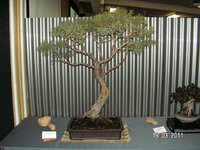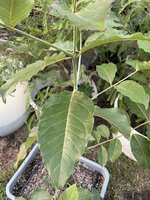Leo in N E Illinois
The Professor
- Messages
- 11,634
- Reaction score
- 24,364
- USDA Zone
- 5b
Oh, these are slow to make fine branching. But in time they will Small Bursera will be a simple whip. You can get nice primary branching fairly easily, though it does take time. You will need a trunk of caliper thicker than your thumb to get any significant branching. I summer my Bursera outdoors in summer, in full sun. They grow fast with access to regular rain and humidity. Once you are a couple inches in diameter you will get finer branching, though the branching will be somewhat coarse. These are not elms. You will not get the fine tracery of a Chinese elm. This same critique is given to Portulacaria afra, so while it is a down side, I do not see it as a "fatal flaw". The bonus of fragrance trumps the coarse branch structure.
Another bonus. Most species are pachycauls, meaning they have a layer of spongey water storage tissue under the bark. The trunk swells and shrinks depending on watering. As a result the outer most layer of bark exfoliates in attractive peeling layers, somewhat like a paper birch or canoe birch. These are sometimes called "traveler trees" or "tourist trees" because they look like sunburned tourists with peeling skin. All in all an interesting genus of trees.
Another bonus. Most species are pachycauls, meaning they have a layer of spongey water storage tissue under the bark. The trunk swells and shrinks depending on watering. As a result the outer most layer of bark exfoliates in attractive peeling layers, somewhat like a paper birch or canoe birch. These are sometimes called "traveler trees" or "tourist trees" because they look like sunburned tourists with peeling skin. All in all an interesting genus of trees.






